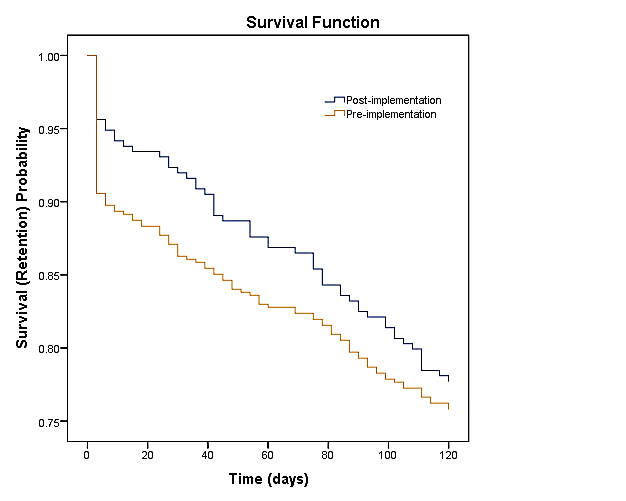Written by Kristin Delgado, Managing Research Consultant
Employee turnover is costly, and I’m not only talking about financial losses (recruiting, onboarding, training). Think of the immeasurable non-financial investments in knowledge, workplace collaboration, and competitiveness. Talent retention is a priority for organizations that put a lot of effort into growing and keeping talent.
So, how do we retain talent?
When choosing an assessment, one of the most successful approaches has been to assess overall “fit” to the organization. Implementation of fit assessments (i.e. motivational fit, culture fit) can help ensure that candidates’ values match those of the organization and increase the likelihood they’ll stay with the organization. But, there’s a catch: tenure must be considered when evaluating how well an assessment affects turnover. All employees will eventually turnover, but the question is, when? There are many reasons an employee would decide to leave that cannot be explained by individual-level characteristics measured in pre-employment testing, such as bad leadership, poor organizational culture, new job opportunities, or personal issues.
At what point can we expect employee assessments to have the biggest influence on turnover?
Realistically, pre-hire tests are best at explaining variance in turnover during the early stages of the employment cycle. This is good news, because early turnover is considered especially problematic to organizations – over 40% of new hires leave within the first 6 months! This means all the investments in recruiting, training, and socialization do not provide any immediate returns. It is estimated that losing a new hire can cost three times the salary of that hire.
Survival Analysis (a.k.a. determining the probability you’ll lose that new hire)
One of the statistical procedures we use to analyze how well an assessment reduces turnover is called “survival analysis.” (This technique has its roots in medical sciences, where it was used to predict the survival of patients, hence the morbid name!) Survival Analysis is useful to anyone who is interested in determining the likelihood of an event occurring over time. For our purposes, survival analysis can tell us the probability that an employee will leave the organization during a given time interval. The “survival function” is a fancy term for the graph that gives us the cumulative probability of an employee staying. As such, survival analysis comes in handy particularly for pre-post comparison, as it allows us to compare the survival functions for multiple groups.
How about an example?
Using archival data from a large retail client, we compared the turnover survival functions from data from over 7,500 employees. The post-implementation group was hired using a customized culture fit assessment, and the pre-implementation group was not. The survival function for each group is shown below. As you can see, the post-implementation group has significantly higher retention (survival) for the first 120 days after hire!

It is important to note that the implementation of the assessment was the only new intervention established during this period. As we expected, we saw the largest pre-post turnover discrepancies early in tenure. As the line converges, it is doing so not because the test stopped working, but rather because other things become more proximal drivers to a turnover decision. A strong effect during the early periods of tenure is exactly what we would expect to see. The factors present in the organizational culture that make people turnover still exist whether they use the test or not – so over time the lines will converge if organization does not address the internal and external drivers of turnover.
Key Takeaways
- Early turnover is particularly expensive because costs associated with recruiting, hiring, and training go up in smoke when the employee leaves.
- The key to understanding how to reduce employee turnover is selecting the right person with the right fit for your organization – but don’t expect this to be a cure-all for all turnover issues!
- Organizations must continue employee retention efforts after the hiring process by recognizing and addressing all potential drivers of turnover within the organization. Assessments can help you get the right people, but, ultimately, it is up to the organization to focus on keeping them!




